Chumbe Island - Birgus latro and the old hermit on the island
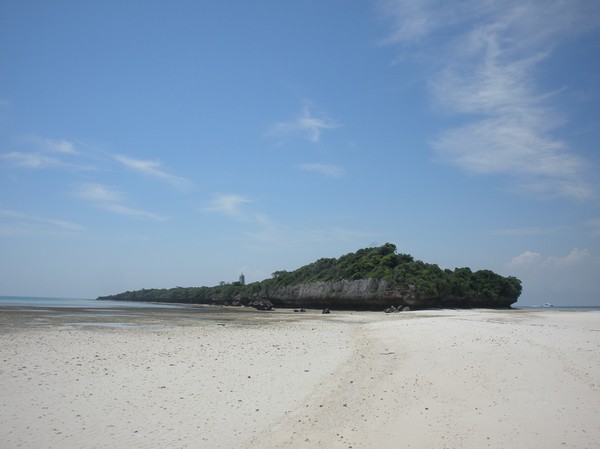
But we've also had a day of checking out Chumbe, our next site where we'll start working tomorrow morning. Chumbe is an island about an hour away from Stone Town and it's sort of a combination of a protected area with a resort. I've tried my best to capture the beauty of Chumbe, but I'm afraid I've failed completly. The underwater pictures I'll have to save for another day. I know I'll take a few hundred more during the following days there and I'll just put them all here at once for you guys. For now, you'll have to do with the above-water pictures.

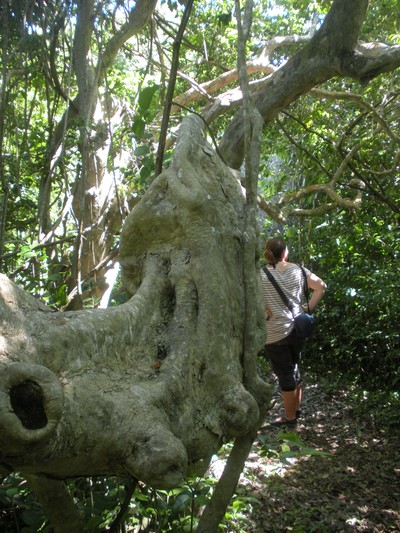

Climbed the lighthouse too. There should be a lighthouse in my story, somewhere. It's on Chumbe.



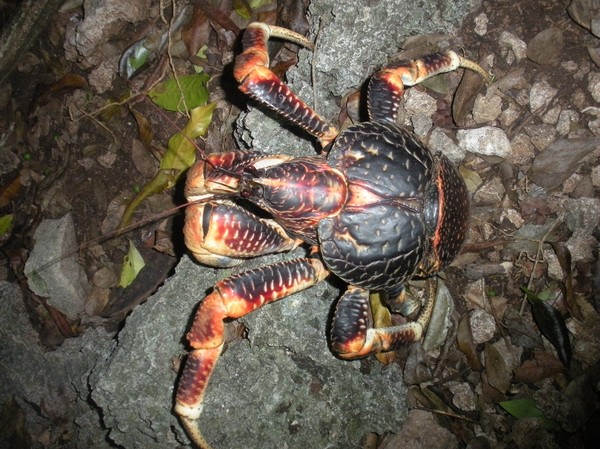

No, I give up. There are no words for it.
Prison Island - Dustbunnies and Nemo's evil twins
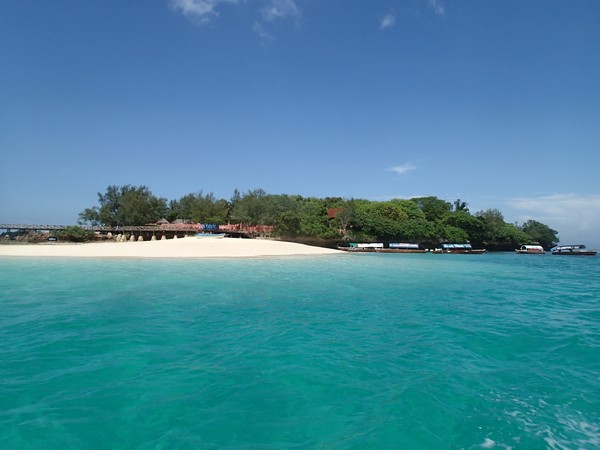

Our first site was Prison Island, or Changuu Island as the locals know it by. It’s an island right outside of Stone Town, where peacocks call their lonely cries and mating tortoises can be heard like modern day dinosaurs. Most of our traps were empty, which was expected, but still slightly disappointing. While Elisa occupied herself exploring transect lines, I spent the time snorkeling and taking pictures of all sorts of interesting animals.

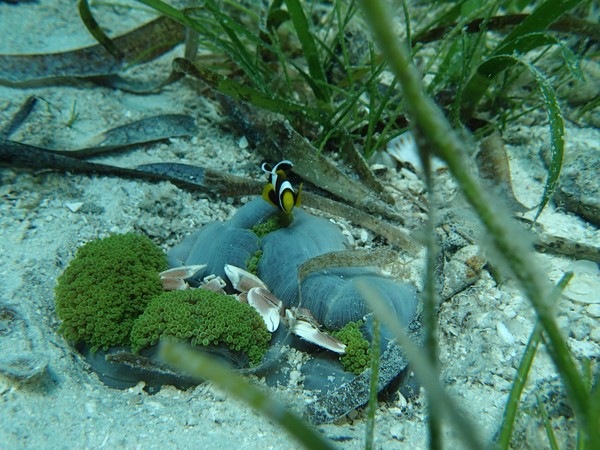



At one point, I got a little bit too excited over seeing a bright yellow butterfly fish, and accidently swam into – yes, swam – one of these sea urchins. Since some of their spines are about the size of my arm, I was quite thankful for the wetsuit. Still hurt, but didn’t leave any mark. Won’t do that again.
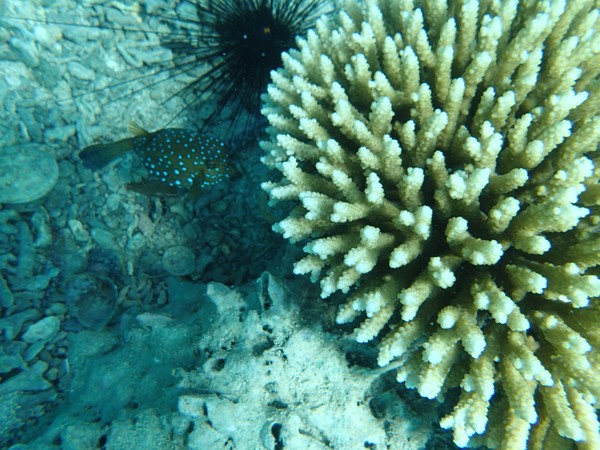
This was one of my absolute favourites at Prison Island, a tiny boxfish that managed to get caught in one of our traps. It’s so incredibly cute and really box-shaped (hence the name).
When we only had a couple of days left, I decided that it was time to live up to my reputation and get my dose of tropical infections. Wohoo! Now I have an ear infection, which is pretty easy to get here when you’re always in the water and it’s hot and humid on land (rainy season). So, now I’m ordered to stay out of the water for the next week. Fortunately, we only had the last few days on Prison Island left and now we have to wait for the next neap tide until we can go to the next site anyway. Spent my time on the boat learning all the fish (samaki) in Kiswahili instead, much to the amusement of our boat guy.

It's a trap! - Madema and spider webs
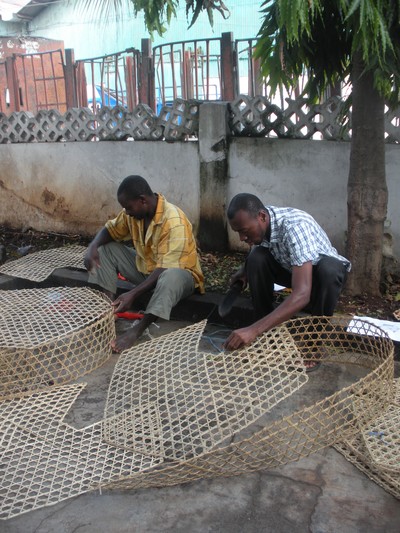
The other day we spent shopping for necessary things, such as buckets, ropes and weights and got caught in another torrent of rain. The narrow streets literally turned into rivers and what would’ve been a not too long walk, turned into a three hour trip! Every now and then, the rain would just come cascading down from the sky and we would all run in to the nearest shop and pretend to admire their beautiful clothes. Everyone else was doing the exact same thing though. Excellent opportunity to learn some Swahili. “Leo mvua” which means “Today it’s raining”. (The typical Swede, always talking about weather). I enjoyed wading through the knee-deep water, even though I didn’t really wanted to think about what was in the water and instead tried to be thankful that I didn’t have any open wounds on my legs this time (which I had in PNG).
Unfortunately and understandably, I didn’t bring my camera to the markets, so there are no pictures of school children running through the water and men slowly making their way to the mosque through the rivers that just kept coming.



Oh, and check another trap maker out. While we were building the madema, Elisa (my supervisor) noticed that the trees above out heads were covered in spider webs and spiders the size of… well I don’t really know what to compare them to. Smaller than my hand, but bigger than I would like them to be! Just as I was wondering what would happen if one of them fell down, we spotted one hanging on to our traps. I managed to take a picture of it before our human trap maker threw it out on the street.
“They can be dangerous, these spiders. This one? Oh… I don’t know.”
It’s gonna be fun living on Spider Lane for another seven weeks.
Zanzibar - spices and sand (and lots and lots of rain)

Zanzibar has a reputation for being a paradise island, and I understand why. Even if I’ve never had a desire to go here until now, the island has a tropical magic on its own. The fact that your taxi driver stops by a local fruit stand to get you a mango just because he feels like it, or that a tropical thunderstorm forces everyone under the nearest roof, even if it belongs to someone you don't know, adds to the feeling of being far away from Sweden.
At 5.30 a.m. the minarets wake devoted Muslims and call for the morning prayer, to the background noise of revving trucks unloading their fish at the market next doors. During the night we’re frequently woken up by sudden rain showers, drum-rolling off the tin roofs. I don’t mind the sounds at all, but either way, they add to my lack of sleep. So does the heat and humidity. Like Fanny commented when we stepped off the plane “It’s like walking into a fish tank”.
Most fish tanks are no way near as beautiful as what I’ve seen snorkeling here though. Triggerfish as colourful as a 5-year olds painting, lionfish on guard with its venomous wings spread out around itself and mooray eels writhing like snakes through the seagrass beds. It really is a bit of paradise, but from what I’ve heard, the entrance fee to paradise is already paid, while here your wallet will notice the cost.
This week I'll be spending buiding traps and preparing permits for my field work. It's gonna be pretty awesome and I'll try to write here whenever possible. Have an additional hundred something fish species to learn by heart as well...
